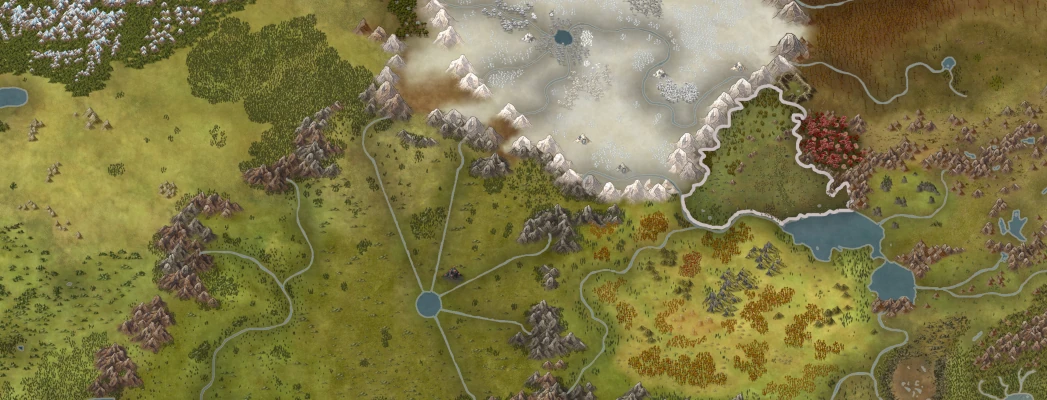Wirysaithe
Wirythsaithe
Wirthsythe
Wirysaithe
(Previous title: The Riverlands)
The Riverlands is a region in west Pretheya which is hemmed in by the Silver Mountains to the east, the Blasted Mountains to the north, and the Barrier Range to the west. These incredible natural defences are what lead to it becoming the capital region of the Grannrormrlen, and defended it against invasion all the way up to the Landamaeri War. The region is commonly divided into sixteen separate sub-regions, which follow the geographical lines of former provinces set down during the Grannrormrlen. These are primarily used to refer to areas on a map, however, and cultural divides run along more organic lines.
of vast areas of cleared land; industrial ruins; and the five Cardinal Waterways which the northern portion of the country is famous for.
In the present day, the Riverlands are home to a number of diverse cultures. In the years since the collapse of the Western Grannrormrlen, nomads from Ostokive have travelled through the mountains to settle in the western provinces, while small communities of Thousandforms have established themselves on the southern coast; brought to the region from distant Asutoa and farther-flung Intersedra in search of new trade opportunities. All the while, the Shahru faith - having long since dominated the rest of the Pretheyan continent - still struggles and fails to find any sort of a foothold in the region.
The Riverlands is a region in west Pretheya which is hemmed in by the Silver Mountains to the east, the Blasted Mountains to the north, and the Barrier Range to the west. These incredible natural defences are what lead to it becoming the capital region of the Grannrormrlen, and defended it against invasion all the way up to the Landamaeri War. The region is commonly divided into sixteen separate sub-regions, which follow the geographical lines of former provinces set down during the Grannrormrlen. These are primarily used to refer to areas on a map, however, and cultural divides run along more organic lines.
The region is most well known as the founding place of the Grannrormrlen. In the year that marks the start of the Reunion calendar, Forfir arrived in the north-east with a hundred Fyrstbairn, and there declared the founding of what would one day become the Grannrormrlen. In the following centuries, the Riverlands served as the empire's capital region, and would grow to become its industrial heartland as well; accruing near unimaginable wealth in the process. Though the fires of industry have long since been snuffed out, their markings can still be seen on the landscape a thousand years later, in the form
Open
"And on the first day of summer, the villagers of Wyrmheim saw a great form cresting the mountain in the horizon; and as they watched, that form was flanked by a hundred more. Towards them they began to march, with the light of the sun at their backs, and all in the village were awed beyond words; for they knew at once that their Lord had returned. And upon arriving at the village gates, the villagers prostrated themselves before the arriving Wyrms. Then, the one at their head - the greatest of their number - stepped forward and spoke thusly: "I am Forfir of the Ormr, he who was Forty-First among the Hundred, and I have come to be your shepherd."
-Excerpt from Marcavian of Vinheim's The Grannrormrlen: A History
Alternative Name(s)
Is a part of Landamar along with Heralya
Type
Region
Included Locations
Riverlands
One of the many waterfalls from which the Riverlands earns its name
Controlling Polities: Split between almost a dozen petty kingdomsRacial Majority: Tveirfotr
Minority Races: Thousandforms
Ethnicities: Many, but primarily split north; west; central; and south
Inhabitants Demonym: Landamaeri by themselves, Riverlanders by others
Notable Cities & Landmarks: Wyrmheim, The Granite Hold, Ennigaldi's Museum




